Abstract
Twenty patients are described with a distinctive clinical syndrome characterised by progressive cerebellar ataxia developing within the first two decades. This is associated with dysarthria, pyramidal signs in the limbs, normal or increased knee jerks and upper limb reflexes and in some instances sensory loss. Inheritance is probably autosomal recessive in the majority, if not all, of the cases. The preservation of tendon reflexes distinguishes this disorder from Friedreich's ataxia. Other important differences from Friedreich's ataxia are absence of optic atrophy, cardiomyopathy, diabetes mellitus and severe skeletal deformity. The prognosis was better in the present series than in cases of Friedreich's ataxia; patients remained ambulant, on average, for more than 10 years longer.
Full text
PDF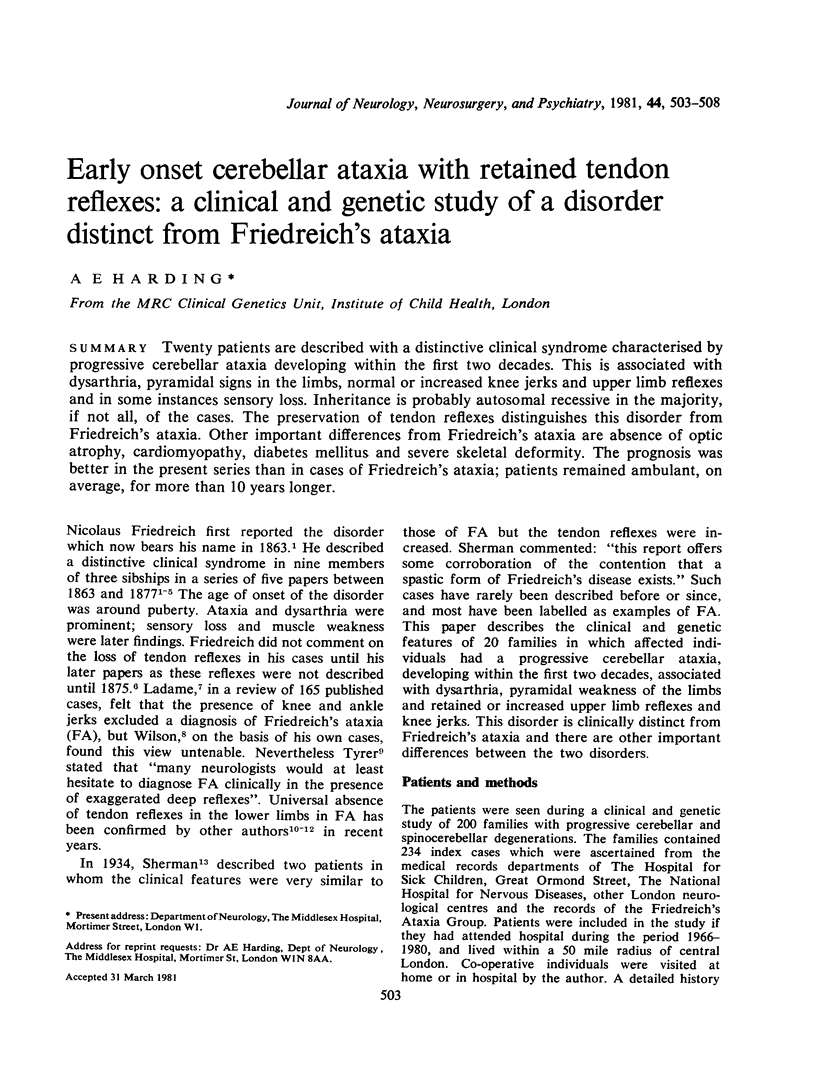
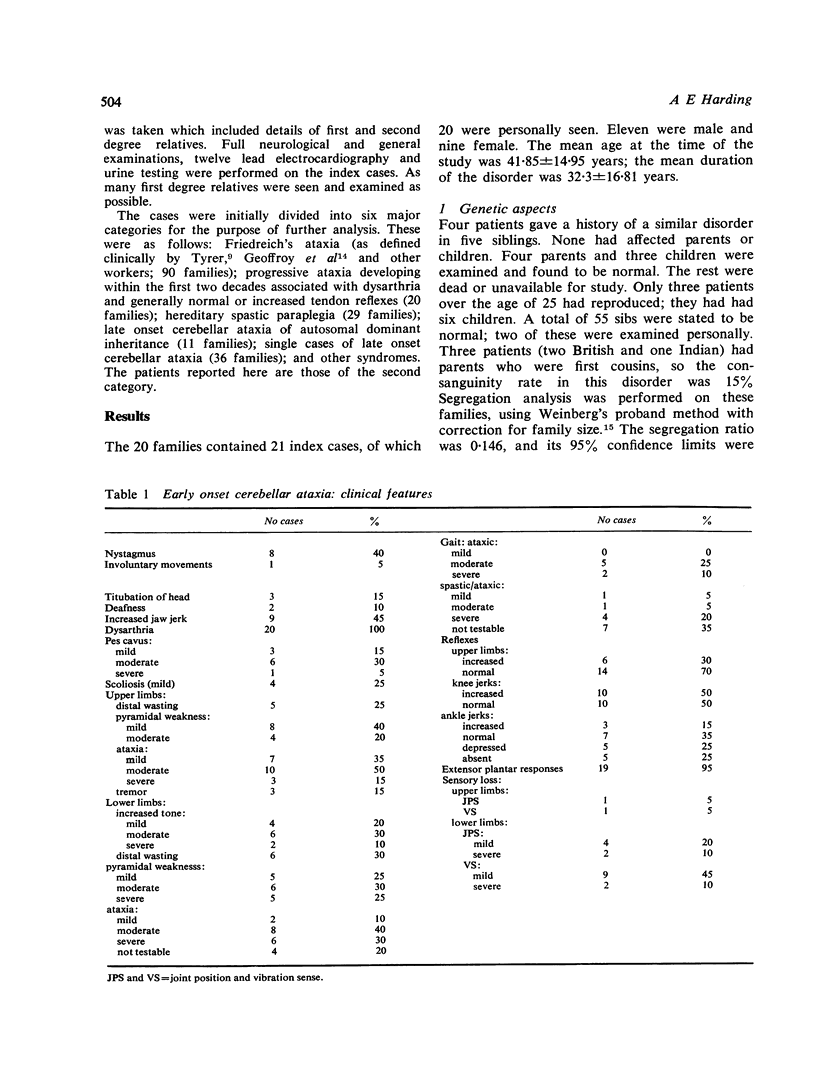
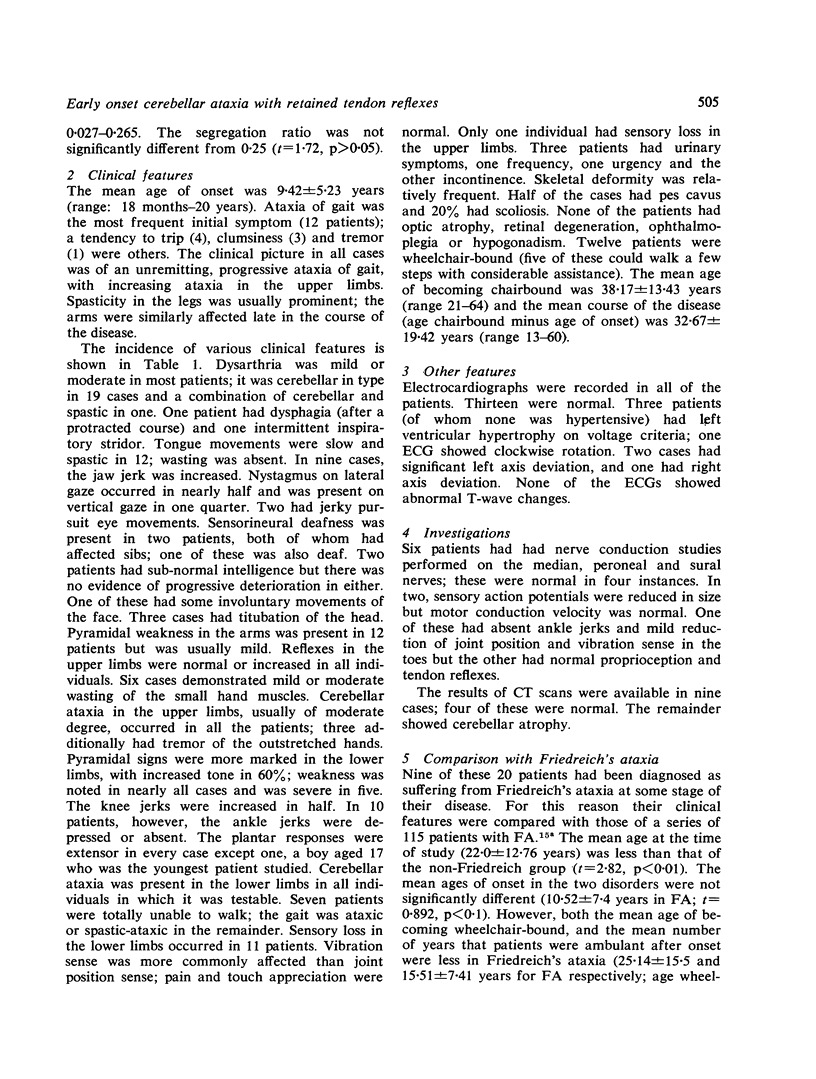
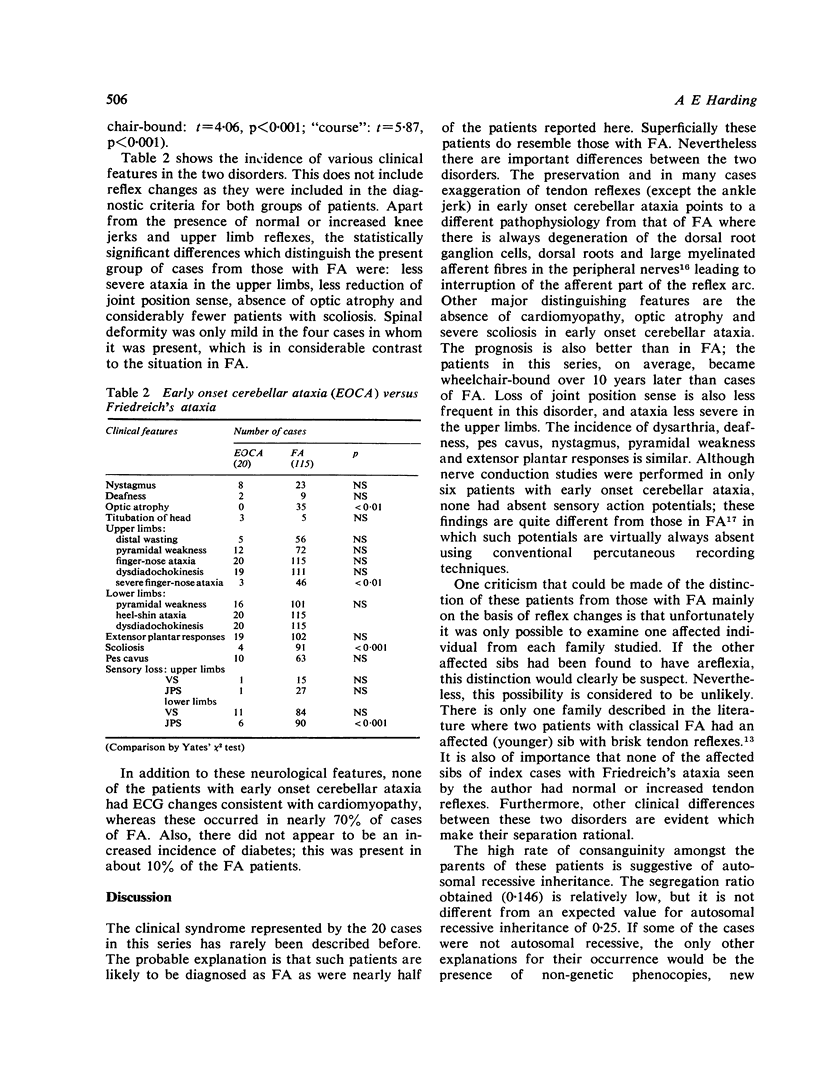
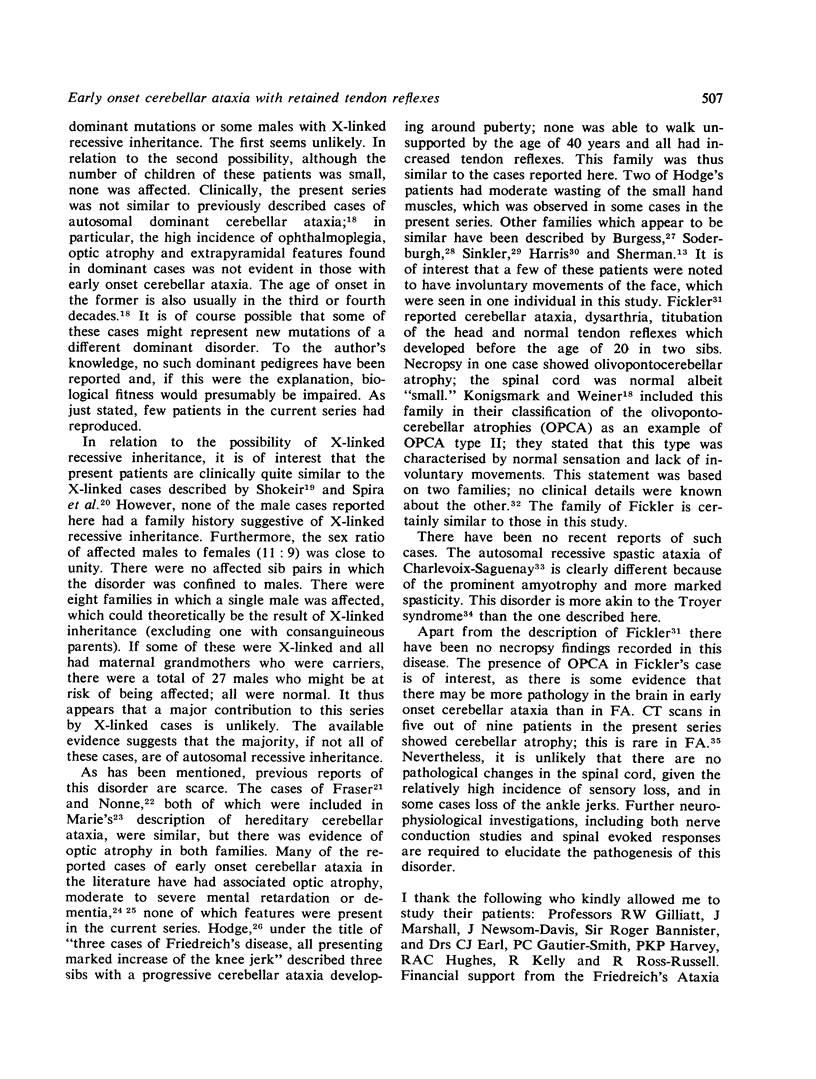
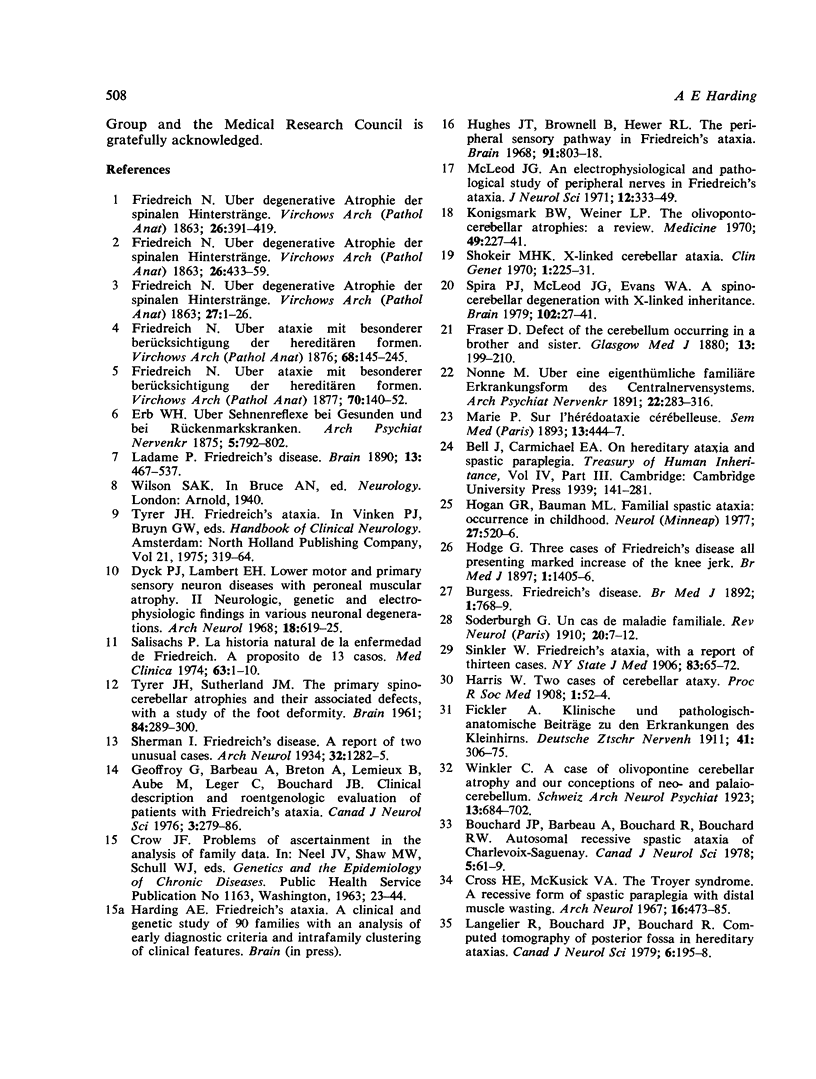
Selected References
These references are in PubMed. This may not be the complete list of references from this article.
- Bouchard J. P., Barbeau A., Bouchard R., Bouchard R. W. Autosomal recessive spastic ataxia of Charlevoix-Saguenay. Can J Neurol Sci. 1978 Feb;5(1):61–69. [PubMed] [Google Scholar]
- Cross H. E., McKusick V. A. The Troyer syndrome. A recessive form of spastic paraplegia with distal muscle wasting. Arch Neurol. 1967 May;16(5):473–485. doi: 10.1001/archneur.1967.00470230025003. [DOI] [PubMed] [Google Scholar]
- Dyck P. J., Lambert E. H. Lower motor and primary sensory neuron diseases with peroneal muscular atrophy. II. Neurologic, genetic, and electrophysiologic findings in various neuronal degenerations. Arch Neurol. 1968 Jun;18(6):619–625. doi: 10.1001/archneur.1968.00470360041003. [DOI] [PubMed] [Google Scholar]
- Geoffroy G., Barbeau A., Breton G., Lemieux B., Aube M., Leger C., Bouchard J. P. Clinical description and roentgenologic evaluation of patients with Friedreich's ataxia. Can J Neurol Sci. 1976 Nov;3(4):279–286. doi: 10.1017/s0317167100025464. [DOI] [PubMed] [Google Scholar]
- Harris W. Cerebellar Ataxy. Proc R Soc Med. 1908;1(NEUROL):52–54. [PMC free article] [PubMed] [Google Scholar]
- Hogan G. W., Bauman M. L. Familial spastic ataxia: occurrence in childhood. Neurology. 1977 Jun;27(6):520–526. doi: 10.1212/wnl.27.6.520. [DOI] [PubMed] [Google Scholar]
- Hughes J. T., Brownell B., Hewer R. L. The peripheral sensory pathway in friedreich's ataxia. An examination by light and electron microscopy of the posterior nerve roots, posterior root ganglia, and peripheral sensory nerves in cases of friedreich's ataxia. Brain. 1968;91(4):803–818. doi: 10.1093/brain/91.4.803. [DOI] [PubMed] [Google Scholar]
- Konigsmark B. W., Weiner L. P. The olivopontocerebellar atrophies: a review. Medicine (Baltimore) 1970 May;49(3):227–241. doi: 10.1097/00005792-197005000-00003. [DOI] [PubMed] [Google Scholar]
- Langelier R., Bouchard J. P., Bouchard R. Computed tomography of posterior fossa in hereditary ataxias. Can J Neurol Sci. 1979 May;6(2):195–198. doi: 10.1017/s0317167100119638. [DOI] [PubMed] [Google Scholar]
- McLeod J. G. An electrophysiological and pathological study of peripheral nerves in Friedreich's ataxia. J Neurol Sci. 1971 Mar;12(3):333–349. doi: 10.1016/0022-510x(71)90067-0. [DOI] [PubMed] [Google Scholar]
- TYRER J. H., SUTHERLAND J. M. The primary spino-cerebellar atrophies and their associated defects, with a study of the foot deformity. Brain. 1961 Jun;84:289–300. doi: 10.1093/brain/84.2.289. [DOI] [PubMed] [Google Scholar]


